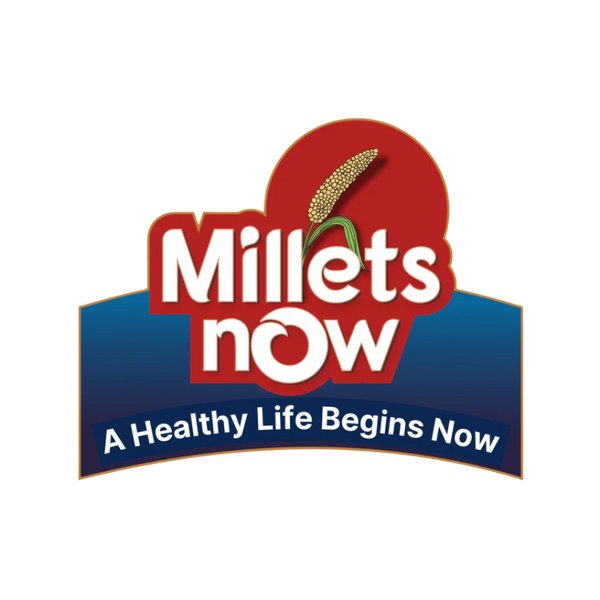Introduction:
Over time, as output declined and dietary preferences switched toward wheat, rice, and processed foods, millet went from being a staple food to becoming a redundant crop. Due to their strong tolerance to drought and other harsh weather conditions, as well as their ability to be produced in infertile soil, nutritious and climate-friendly millet has made a huge comeback and is becoming more and more popular among farmers 1. According to their grain size, millets are divided into major and minor varieties. Bajra- Peral millet, Ragi- Finger millet and sorghum(Jowar) are Major millets and Minor millets are Kodo, Barnyard, Little , Proso, and Foxtail millet .
Rice yields would decrease by 22%, wheat yields by 18%, and maize yields by 15% due to climate change in the coming 20 to 30 years. Nowadays customers prefer foods that are ready to eat preparations of millets , and these have to be comparable to wheat and rice. After 30 years of the green revolution, the public’s acceptance of millet has increased dramatically in recent years due to an increase in non-communicable diseases and the failure of pregnant women and teenagers to reverse their anemia.
Millets: Unveiling Functional Properties and Health Benefits:
Millets are now referred to as nutri cereals, smart food, and the “God diet.” Millets have antibacterial, antioxidant, gluten-free properties and rich in immune-boosting minerals.. Because millets increase stomach volume, delay stomach emptying, boost feelings of fullness, limit digestion, lower hunger index, and slow the release of glucose into the blood, they are higher in fiber than refined rice. Compared to refined rice, millets are higher in protein, which increases insulin sensitivity and results in a lower glycemic response. millets have a low glycemic response and a delayed rate of starch hydrolysis .Understanding the nation’s millets’ supply and demand is necessary 2. These aid in weight loss, raising HDL levels, and lowering LDL, and VLDL levels. Soluble and insoluble fiber are the two forms of fiber found in millets; the second one is abundant in barnyard, finger, and bajra millet. The growth of bacteria, prebiotics, and probiotics is aided by insoluble fiber.
Utilization of Major and Minor millets in India:
One of the oldest millets, bajra is not only reasonably priced, but also environmentally friendly and drought-resistant. It is good for anemic individuals, bone growth and repair, pearl millet can also prevent cancer. Mostly planted in India’s arid and semi-arid region
Jowar is a crop that is high in nutrients and a “coarse cereal” is another name for it, and it can be used as fodder or food. Sorghum is far more equitable, In South India, Jowar and Ragi are eaten in a variety of ways. People with diabetes and high blood pressure often eat boiled flour (sangati) or malt form along with butter milk.
The three states that produce the most Jowar in the nation are Andhra Pradesh, Karnataka, and Maharashtra.The older generations know how to prepare millet, whereas only a small percentage of the younger generations know how to cook Bajra, Jowar, and Ragi. and require the millets to soak in water for a minimum of 6 to 8 hours prior to cooking. After soaking, they can occasionally be dried for three hours to create a powder that can be used in a variety of dishes.Indigestion problems were a concern for those who did not follow a soaking procedure. Millets, primarily Ragi, lose their phytic acids and oxalates as they soak 3,4. Millets are also beneficial for children’s brain development.Brown top millet is used for gastrointestinal issues, barnyard millet is used for liver and bladder issues, foxtail is helpful for nerve growth, kodo millet purifies blood, and Little millet is beneficial for hormonal balances and lowering fertility.
Millets and Climate Resilience:
Rice and wheat are regarded as negative grains; 2023 is designated as the International Year of Millets.There will be a significant shortage of water for agricultural cultivation in the future due to the recent increase in global warming and the decline in earth’s water body levels.Water usage is higher for growing rice and wheat comparison with water needed for millets
A Pathway to Health and Nutrition Awareness:
Inorder to encourage healthy eating habits, AIIMS Bhuvaneswar adds millet to the diets of patients and students and their amino acid composition fills in nutritional gaps found in basic foods like wheat and rice. Millets include iron, calcium, and phosphorus, which strengthen bones and fight anemia.Some Doctors are now recommending millet eating, however the public’s access to these grains in the local grocery stores is inadequate. All public health professionals may consider food as medicine and need to think about : Are we eating correct foods? Whether our decisions, House Wives and Children views are sound 5. Although there are currently scientific studies on the health advantages of millets, doctors still need to inform the public about their value. It is necessary to teach about millets in schools and these can be used used in hostels, schools, Anganwari centers and colleges.

